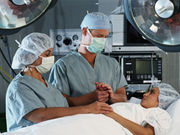Guidelines developed for management of upper gastrointestinal foreign body ingestion
FRIDAY, Jan. 29, 2016 (HealthDay News) — Guidelines, published online Jan. 25 in the Journal of Digestive Diseases, have been developed for endoscopic management of foreign bodies in the upper gastrointestinal tract.
Jin Huan Lin, from Changhai Hospital in Shanghai, and colleagues developed guidelines on the endoscopic management of foreign bodies, focusing mainly on those lodged in the upper gastrointestinal tract.
The authors note that in China, 24,529 cases of upper gastrointestinal foreign bodies were reported in the past five years, which is likely far lower than the actual number of cases. Diagnosis is based on medical history; clinical manifestations; and auxiliary examinations, including frontal mirror, laryngoscopy, imaging examination, and endoscopy, as well as laboratory testing. The main treatments include natural elimination, endoscopy, and surgery; in China, a higher proportion of patients undergo endoscopic treatments due to the different nature of foreign bodies compared with Western countries. Patients who tolerate endoscopic procedures and have no complications are eligible for endoscopic surgery, which is less invasive and has fewer complications. Laryngoscopy should be performed first, followed by gastroscopy or rigid esophagoscopy if laryngoscopy fails.
“The timing of endoscopic treatment depends on the clinical manifestations and on the type, location, and the time since ingestion of the foreign bodies,” the authors write. “In principle, high-risk foreign bodies are usually removed via emergency endoscopy, whereas low-risk ones are treated with elective endoscopy.”
Copyright © 2016 HealthDay. All rights reserved.








